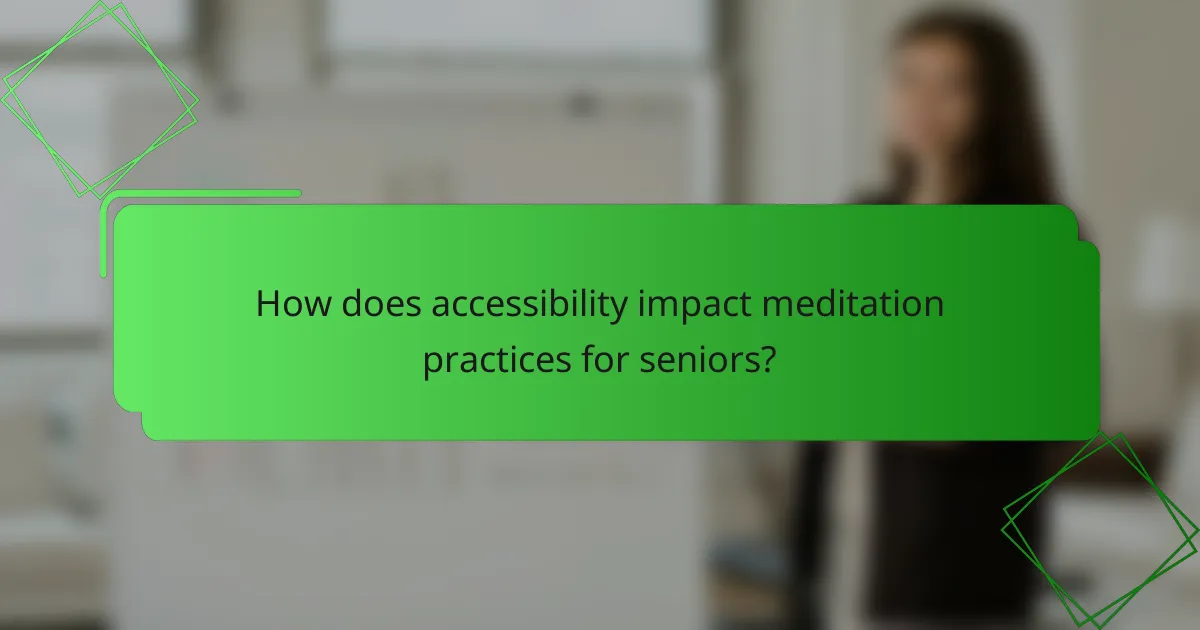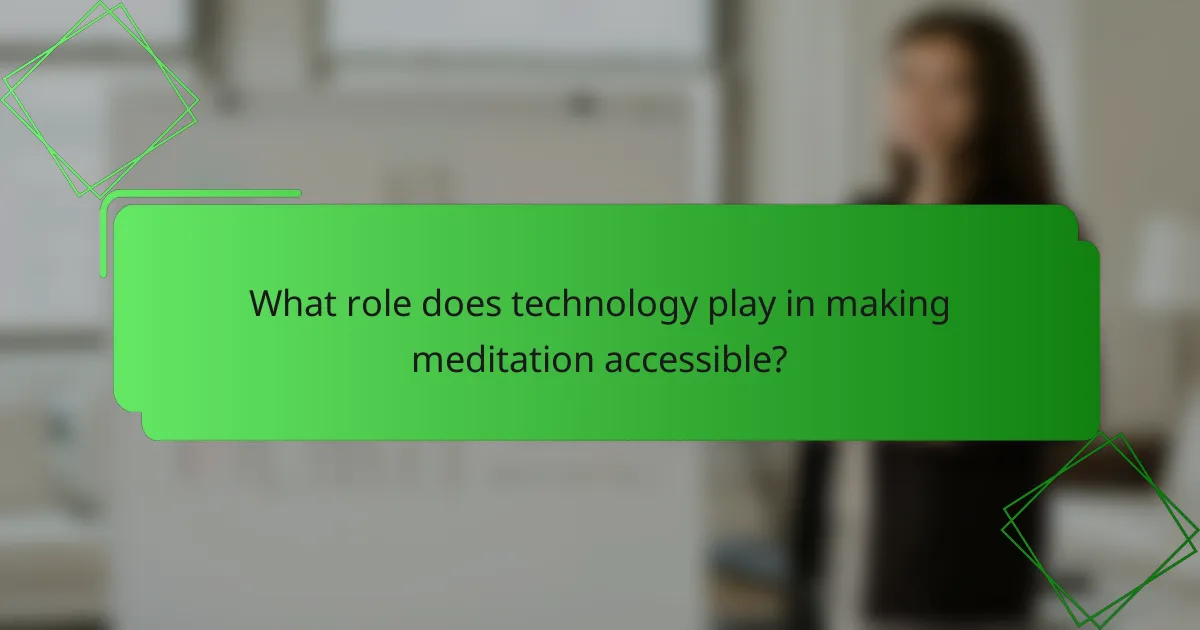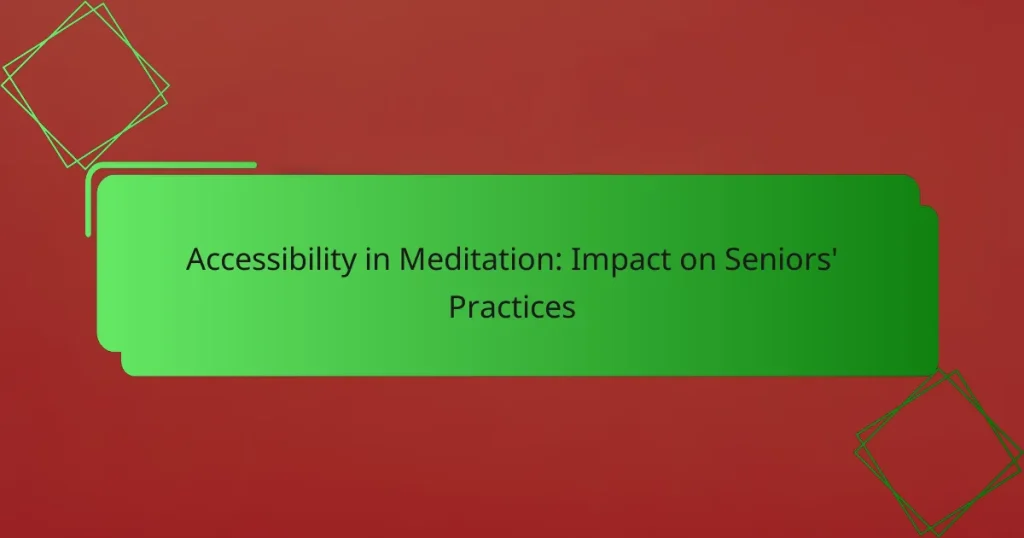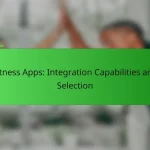Accessibility plays a crucial role in enhancing meditation practices for seniors, as it addresses barriers that may prevent their participation. By incorporating physical adaptations and tailored resources, seniors can engage in effective techniques such as guided meditations and mindfulness exercises, fostering relaxation and mental clarity. Additionally, user-friendly digital products further simplify the meditation process, making mindfulness more approachable for older adults.

How does accessibility impact meditation practices for seniors?
Accessibility significantly enhances meditation practices for seniors by removing barriers that may hinder their participation. This includes physical adaptations, tailored resources, and supportive environments that encourage engagement and comfort.
Improved physical comfort
Improved physical comfort is essential for seniors engaging in meditation. Accessible seating options, such as supportive chairs or cushions, can alleviate discomfort during practice, allowing for longer and more effective sessions. Additionally, adjustable lighting and temperature control can create a more inviting atmosphere.
Consider incorporating props like bolsters or blankets to support various postures. These adjustments can help seniors maintain focus on their meditation rather than on physical discomfort, leading to a more fulfilling experience.
Enhanced mental well-being
Accessibility in meditation can lead to enhanced mental well-being for seniors by fostering a sense of inclusion and community. When meditation practices are tailored to meet their needs, seniors are more likely to experience reduced anxiety and improved mood. This can be particularly beneficial for those dealing with isolation or depression.
Offering guided sessions that are easy to follow and understand can further support mental clarity. Simple techniques, such as breathing exercises or visualization, can be adapted to ensure that seniors feel confident and engaged during their practice.
Increased participation rates
Increased participation rates among seniors can be achieved through accessible meditation programs. When barriers such as transportation, physical limitations, or lack of knowledge are addressed, more seniors are likely to join meditation classes or groups. This can lead to a richer community experience and shared learning.
To encourage participation, consider offering online sessions or local community classes that are specifically designed for seniors. Providing clear information about the benefits of meditation and how to get started can also motivate more individuals to engage in these practices.

What are effective meditation techniques for seniors?
Effective meditation techniques for seniors include guided meditations, chair yoga, and mindfulness breathing exercises. These methods are designed to accommodate physical limitations while promoting relaxation and mental clarity.
Guided meditation apps
Guided meditation apps are user-friendly tools that provide audio or video instructions for meditation sessions. Many apps offer specific programs tailored for seniors, focusing on relaxation, stress relief, and mental well-being.
Popular apps like Headspace and Calm include features such as adjustable session lengths and soothing background sounds, making them accessible for users of all experience levels. Seniors should look for apps that allow customization to suit their preferences and needs.
Chair yoga integration
Chair yoga is an excellent way for seniors to incorporate physical movement into their meditation practice. This form of yoga allows individuals to perform stretches and poses while seated, reducing the risk of injury and making it easier to maintain balance.
Simple chair yoga poses, such as seated forward bends and gentle twists, can enhance relaxation and improve flexibility. It is beneficial to combine these movements with deep breathing to deepen the meditative experience.
Mindfulness breathing exercises
Mindfulness breathing exercises focus on the breath as a way to anchor the mind and promote relaxation. Seniors can practice techniques such as deep belly breathing or the 4-7-8 method, which involves inhaling for four counts, holding for seven, and exhaling for eight.
These exercises can be done anywhere and require no special equipment. Regular practice can help seniors reduce anxiety and improve overall mental clarity, making it a practical addition to their meditation routine.

Which digital products support senior meditation accessibility?
Several digital products enhance meditation accessibility for seniors by offering user-friendly interfaces, tailored content, and features that accommodate varying levels of experience. These tools focus on simplifying the meditation process, making it easier for older adults to engage in mindfulness practices.
Insight Timer app
The Insight Timer app is popular among seniors due to its extensive library of free guided meditations and music tracks. It features a straightforward interface that allows users to easily navigate through various categories, such as sleep, stress relief, and mindfulness.
Additionally, the app includes community features where users can connect with others, fostering a sense of belonging. Seniors can also track their meditation progress, which can motivate them to maintain a regular practice.
Headspace for Seniors
Headspace for Seniors offers a specialized version of its meditation platform that caters to older adults. This version includes shorter sessions and gentle guidance, making it more accessible for those who may be new to meditation or have limited attention spans.
The app also provides themed courses that focus on topics relevant to seniors, such as managing anxiety or improving sleep quality. Users can benefit from the visual and auditory cues that help enhance their meditation experience.
Calm app features
The Calm app is designed with features that support seniors in their meditation journey. It offers a variety of calming sounds, sleep stories, and guided meditations tailored for relaxation and stress reduction. The app’s user-friendly design makes it easy for seniors to find and enjoy content that suits their needs.
Calm also includes a “Daily Calm” feature, which provides a new meditation each day, encouraging consistent practice. Seniors can customize their experience by selecting the duration of their sessions, ranging from just a few minutes to longer practices, allowing them to meditate at their own pace.

What are the barriers to meditation accessibility for seniors?
Seniors often face several barriers that hinder their ability to engage in meditation practices. These challenges can stem from physical limitations, technological hurdles, and a lack of resources specifically designed for their needs.
Physical limitations
Many seniors experience physical limitations that can make traditional meditation practices difficult. Conditions such as arthritis, limited mobility, or chronic pain can affect their ability to sit comfortably for extended periods.
To accommodate these challenges, seniors can explore seated meditation options or use supportive cushions and chairs. Gentle yoga or stretching can also be integrated to enhance comfort during meditation sessions.
Technological challenges
Technological challenges can significantly impact seniors’ access to meditation resources. Many meditation apps and online platforms may be difficult for older adults to navigate due to complex interfaces or small text sizes.
To improve accessibility, seniors should look for user-friendly apps designed with older users in mind. Features such as larger fonts, simple navigation, and clear instructions can facilitate a more enjoyable meditation experience.
Lack of tailored resources
A lack of tailored resources specifically for seniors can limit their meditation practices. Many available materials do not consider the unique needs and preferences of older adults, which can lead to frustration or disengagement.
To address this, seniors should seek out resources that cater to their demographic, such as guided meditations focusing on relaxation and mindfulness. Community centers or senior organizations may also offer workshops or classes specifically designed for older adults.

How can community programs enhance meditation accessibility for seniors?
Community programs can significantly improve meditation accessibility for seniors by providing tailored resources and supportive environments. These initiatives often focus on local engagement, making meditation practices more approachable and relevant to older adults.
Local workshops
Local workshops offer seniors hands-on experience with meditation techniques in a familiar setting. These sessions can be held in community centers, libraries, or parks, making them easily accessible. Instructors can adapt practices to accommodate varying physical abilities, ensuring everyone can participate.
Workshops typically last between one to two hours and may include guided meditations, discussions on mindfulness, and opportunities for social interaction. Offering these sessions at different times can help cater to diverse schedules, increasing participation rates.
Online group sessions
Online group sessions provide a flexible alternative for seniors who may have mobility issues or prefer to meditate from home. These virtual gatherings can be accessed via platforms like Zoom or Skype, allowing participants to join from anywhere with an internet connection. Sessions can include live guidance and community interaction, fostering a sense of belonging.
To ensure accessibility, it’s essential to choose user-friendly technology and provide clear instructions on how to join. Sessions can be scheduled at various times to accommodate different time zones and preferences, making it easier for seniors to engage regularly.
Partnerships with senior centers
Partnerships with senior centers can enhance meditation accessibility by integrating programs directly into existing services. These collaborations can help promote meditation as a wellness activity, encouraging more seniors to participate. Senior centers can provide the necessary space and resources, while meditation instructors bring expertise.
Such partnerships can also facilitate outreach efforts, ensuring that information about meditation programs reaches a broader audience. Regularly scheduled sessions can become a staple of the center’s offerings, helping to build a community around mindfulness and well-being.

What role does technology play in making meditation accessible?
Technology plays a crucial role in enhancing accessibility to meditation for seniors by providing tools that simplify the practice and cater to individual needs. From wearable devices that offer reminders to virtual reality experiences that immerse users in calming environments, technology can significantly improve engagement and effectiveness.
Wearable devices for reminders
Wearable devices, such as smartwatches and fitness trackers, can help seniors establish a regular meditation routine by sending gentle reminders. These devices often feature customizable alerts that can prompt users to take breaks for mindfulness throughout the day.
Additionally, many wearables track heart rates and stress levels, allowing seniors to identify optimal times for meditation based on their physiological responses. This personalized approach can enhance the overall meditation experience.
Virtual reality meditation experiences
Virtual reality (VR) meditation experiences provide immersive environments that can transport seniors to serene settings, enhancing their practice. By using VR headsets, users can engage in guided meditations set in calming landscapes, which can help reduce distractions and promote relaxation.
These experiences can be particularly beneficial for seniors who may have mobility issues, as they can explore various environments without leaving their homes. However, it’s important to ensure that the technology is user-friendly and accessible to those who may not be tech-savvy.
Adaptive interfaces for apps
Adaptive interfaces in meditation apps can significantly improve accessibility for seniors by tailoring the user experience to individual needs. Features such as larger text, voice commands, and simplified navigation can make it easier for older adults to engage with meditation practices.
When selecting an app, seniors should look for options that offer customizable settings, allowing them to adjust elements like volume, pace, and background sounds. This flexibility ensures that users can create a meditation experience that suits their preferences and comfort levels.


